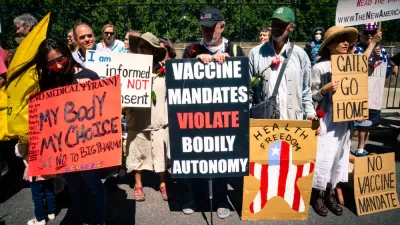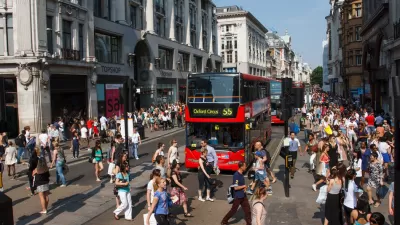Here is a list you presumably do not want to find your city on: the most obese metro areas in the country. Dan Witters breaks down the results that Gallup has recently released as part of the Gallup-Healthways Well-Being Index.
In a dismaying, but unsurprising, overall finding, "[a]dult obesity rates were higher than 15% in all but three of the 190 metropolitan areas that Gallup and Healthways surveyed in 2011," reports Witters. And the residents of the McAllen-Edinburg-Mission area of Texas were the most likely to be obese with an astounding 38.8% of the adult population qualifying.
The Boulder, Colorado metropolitan area led with the lowest obesity rate, at 12.1%. According to Witters, "Boulder, Bridgeport-Stamford-Norwalk, Conn., and Fort Collins-Loveland, Colo., are the only three metro areas that achieved the Centers for Disease Control and Prevention's nationwide goal of lowering obesity rates to 15%."
The effects on financial and physical health of Americans caused by the growing obesity epidemic are profound. "Those living in the 10 areas with the highest levels of obesity are much more likely to report a diagnosis of chronic diseases, including diabetes, high blood pressure, high cholesterol, and depression at some point in their lives than those living in the 10 areas with the lowest obesity rates."
Furthermore, "Americans living in the 10 metro areas where obesity rates are highest cumulatively pay an estimated $1 billion more in healthcare costs each year as a result of high obesity levels than they would if their obesity rates were 15%."
FULL STORY: More Than 15% Obese in Nearly All U.S. Metro Areas

Planetizen Federal Action Tracker
A weekly monitor of how Trump’s orders and actions are impacting planners and planning in America.

Maui's Vacation Rental Debate Turns Ugly
Verbal attacks, misinformation campaigns and fistfights plague a high-stakes debate to convert thousands of vacation rentals into long-term housing.

San Francisco Suspends Traffic Calming Amidst Record Deaths
Citing “a challenging fiscal landscape,” the city will cease the program on the heels of 42 traffic deaths, including 24 pedestrians.

Amtrak Rolls Out New Orleans to Alabama “Mardi Gras” Train
The new service will operate morning and evening departures between Mobile and New Orleans.

The Subversive Car-Free Guide to Trump's Great American Road Trip
Car-free ways to access Chicagoland’s best tourist attractions.

San Antonio and Austin are Fusing Into one Massive Megaregion
The region spanning the two central Texas cities is growing fast, posing challenges for local infrastructure and water supplies.
Urban Design for Planners 1: Software Tools
This six-course series explores essential urban design concepts using open source software and equips planners with the tools they need to participate fully in the urban design process.
Planning for Universal Design
Learn the tools for implementing Universal Design in planning regulations.
Heyer Gruel & Associates PA
JM Goldson LLC
Custer County Colorado
City of Camden Redevelopment Agency
City of Astoria
Transportation Research & Education Center (TREC) at Portland State University
Jefferson Parish Government
Camden Redevelopment Agency
City of Claremont





























